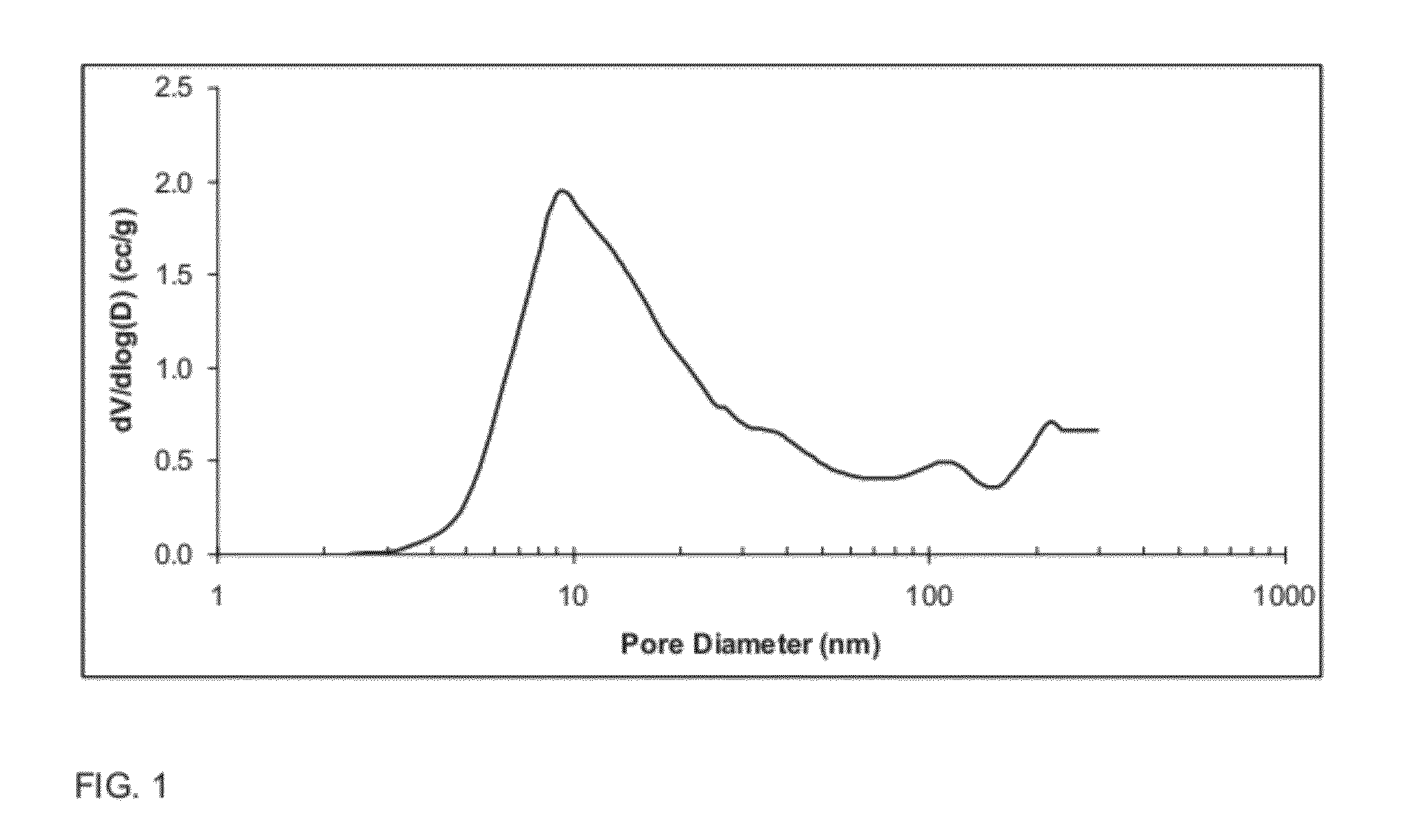Alumina catalyst support
- Summary
- Abstract
- Description
- Claims
- Application Information
AI Technical Summary
Benefits of technology
Problems solved by technology
Method used
Image
Examples
example 2
[0123]The composite oxide of Example 2 comprising, on the basis of 100 pbw of the composite oxide, 100 pbw Al2O3, was made using aluminum sulfate, sodium aluminate, as follows. Solution A was made mixing 77 g of an aqueous solution of aluminum sulfate, with a concentration of 8.31 wt % expressed as aluminum oxide Al2O3 with 39 g of nitric acid, with a concentration of 69 wt % and 233 g of deionized water. Solution B was an aqueous solution of sodium aluminate, with a concentration of 24.86 wt %, expressed as aluminum oxide Al2O3. A 1 liter reactor was filled with 516 g of deionized water. The reactor contents were heated at 70° C. and this temperature was maintained along the whole experiment. Nitric acid was added to the reactor so the pH is adjusted to 3. Then solutions A and B were then simultaneously fed to the reactor with agitation of the reactor contents. Over the 5 first minutes of the simultaneous feeds, the respective flow rates of Solutions A and B were adjusted so the pH...
example 3
[0126]The composite oxide of Example 2 comprising, on the basis of 100 pbw of the composite oxide, 96 pbw Al2O3 and 4 pbw of La2O3, was made as describe in Example 2, with the addition of aqueous lanthanum nitrate in solution A. The spray dried powder was then calcined at 900° C. for 2 hours. Specific surface area (“SA”, expressed in square meters per gram (“m2 / g”)), pore volume (expressed in cubic centimeters per gram (“cm3 / g”)), average pore diameter (expressed in nanometers (“nm”)), and contribution of pores smaller than 10 nm to the total pore volume are reported in TABLE IV below.
[0127]After calcination at 900° C. for 2 hours, the composite oxide of Example 3 was then calcined at 1100° C. for 5 hours and 1200° C. for 5 hours. The surface area of the resulting sample were measured respectively at 115 and 82 m2 / g.
[0128]The pore size distribution for the oxide composition of Example 3, as measured by nitrogen porosimetry after calcination at 900° C. for 2 hours, is shown FIG. 14 (...
PUM
| Property | Measurement | Unit |
|---|---|---|
| Temperature | aaaaa | aaaaa |
| Temperature | aaaaa | aaaaa |
| Temperature | aaaaa | aaaaa |
Abstract
Description
Claims
Application Information
 Login to View More
Login to View More - R&D Engineer
- R&D Manager
- IP Professional
- Industry Leading Data Capabilities
- Powerful AI technology
- Patent DNA Extraction
Browse by: Latest US Patents, China's latest patents, Technical Efficacy Thesaurus, Application Domain, Technology Topic, Popular Technical Reports.
© 2024 PatSnap. All rights reserved.Legal|Privacy policy|Modern Slavery Act Transparency Statement|Sitemap|About US| Contact US: help@patsnap.com










